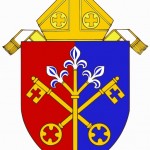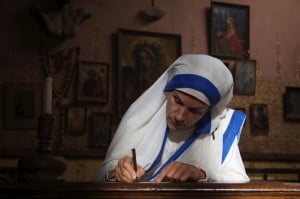Six women, from throughout Europe. They didn’t know one another; but each enjoyed a deep mystical relationship with God. They are:
- Saint Veronica Giuliani –Italy
- Saint Hildegard of Bingen –Germany
- Saint Gertrude of Helfta –Germany
- Saint Bridget –Sweden
- Saint Margaret Mary Alacoque –France
- Blessed Julian of Norwich –England
The common thread uniting these saints and blesseds—apart from their discernible sanctity—is that all are on the list to be considered for the title of “Doctor of the Church.” They follow in the footsteps of three saintly women who have been already been given the title: Saint Teresa of Avila and Saint Catherine of Siena, invested by Pope Paul in 1970; and Saint Thérèse of Lisieux, who received the title from Pope John Paul II in 1997.
 With this week’s surprise announcement by Pope Benedict, declaring Saint John of Avila the 34th Doctor of the Church, the list of candidates still under consideration is at seventeen. In addition to the six women named above, the eleven holy men who are likely to be named “Doctor” are Saint Gregory of Narek, Saint John Bosco, Saints Cyril and Methodius, Saint Lorenzo Giustiniani, Saint Antonino of Florence, Saint Thomas of Villanova, Saint Ignatius of Loyola, Saint Vincent de Paul, Saint Louis-Marie Grignion de Montfort, and Saint Bernardino of Siena.
With this week’s surprise announcement by Pope Benedict, declaring Saint John of Avila the 34th Doctor of the Church, the list of candidates still under consideration is at seventeen. In addition to the six women named above, the eleven holy men who are likely to be named “Doctor” are Saint Gregory of Narek, Saint John Bosco, Saints Cyril and Methodius, Saint Lorenzo Giustiniani, Saint Antonino of Florence, Saint Thomas of Villanova, Saint Ignatius of Loyola, Saint Vincent de Paul, Saint Louis-Marie Grignion de Montfort, and Saint Bernardino of Siena.
* * * * *
So how, exactly, does one become a “Doctor of the Church”?
There are three conditions which must be met before a holy person will be accorded the title of “Doctor”:
- Eminens doctrina (eminent learning). That is, the saint’s writings or preaching have contributed to Catholic thought and are useful for people “in any age.” It’s important to note that their writings are not considered “infallible”—although “Doctors of the Church” certainly manifest a profound understanding of theology and orthodoxy.
- Insignis vitae sanctitas (a high degree of sanctity). One must be holy, of course. Most of the Doctors of the Church were mystics—that is, they experienced visions or manifestations of God’s presence in their lives, in ways that are not common.
- Ecclesiae declaration (proclamation by the Church).
And judging from the list of “Doctors” named to date, it can’t hurt to be a founder of a religious order, or a member of a contemplative order.
These unique qualifiers, though, may not be the only route to receiving the title. In the future, the title of “Doctor” may be conferred on martyrs, as well as on mystics. At least, that’s an option which was laid out by the Jesuit writer Giandomenico Mucci, who published an article on “The Title of Doctor of the Church” in La Civiltà Cattolica in 1997.
Mucci went on to explain that while mystics and martyrs can be considered, popes cannot. Mucci explained that the title “Doctor of the Church” is based on the “eminens doctrina.” It can’t, he writes, be concealed under any gift of sanctity possessed by the candidate. So even a martyr in whom the Church recognizes the “eminens doctrina” (Ignatius, Irenaeus, Cyprian) can be elevated to the doctorate, despite the different historical practice.
However, Mucci adds, the documents produced by a Roman pontiff, by virtue of his guarantee of infallibility, are already authoritative—not because of the “eminens doctrina” possessed as a personal gift of grace, but by virtue of the office he holds, as supreme pastor and doctor of all the faithful.
Mucci’s speculation has yet to be put to the test. Currently, two Vatican congregations—the Congregation for the Causes of Saints, and the Congregation for the Doctrine of the Faith—are reviewing the practices for naming Doctors.











